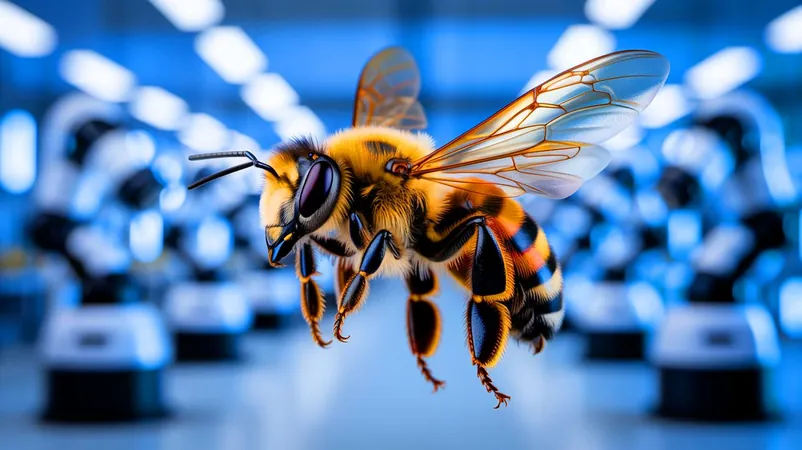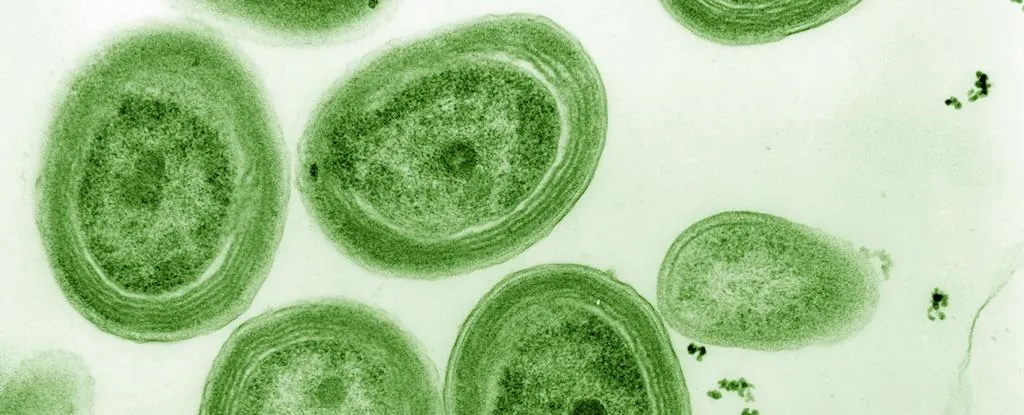
The Buzzing Breakthrough: How Bees are Shaping the Future of Robotics and AI
2025-07-04
Author: Sophie
Unlocking Nature’s Secrets for Advanced Technology
In the race for innovation, humanity often looks to nature for inspiration. A recent study of bees reveals a fascinating insight into how these tiny creatures, with brains the size of sesame seeds, manipulate their flight movements to improve their visual perception. This groundbreaking research, spearheaded by scientists at the University of Sheffield, could pave the way for revolutionary advancements in artificial intelligence (AI) and robotics.
The Genius of Bee Flight
Bees aren’t just busy pollinators; their intricate flight patterns represent a marvel of cognitive efficiency. Researchers have found that bees actively use their movements to enhance their visual perception, allowing them to recognize complex images with uncanny accuracy—from identifying flowers to faces. By creating computational models that replicate bee behavior, scientists have unlocked valuable secrets that could lead to the development of smarter, more efficient AI.
Professor James Marshall from the University of Sheffield highlights that this research showcases the remarkable abilities of small systems to tackle advanced tasks. By imitating these natural processes, engineers could design robots that perceive and interact with their surroundings more like living beings. This approach may lead to machines that adapt to their environments in ways previously deemed impossible.
Redefining Intelligence: It's Not Just About Size
The longstanding debate over whether brain size correlates with intelligence has taken a new turn. Recent studies, including those from the University of London, suggest that larger brains do not necessarily mean higher intelligence. By examining the neural structure of bees, researchers have pinpointed the minimal neuron count needed for complex visual tasks, showing that even systems with fewer resources can perform advanced computations.
Professor Lars Chittka’s findings emphasize that true intelligence results from optimized neural computations, not just the sheer size of the brain. This insight could shift AI research from cranking up computational power to enhancing processing efficiency, potentially leading to more powerful yet resource-conserving systems.
Revolutionizing Agriculture with Robotic Bees
Drawing from the efficiency of bee movement, MIT has pioneered tiny robotic insects designed to transform agriculture. These diminutive innovations, lighter than a paperclip, can execute agile flight maneuvers necessary for artificial pollination. This game-changing approach could revolutionize fruit and vegetable cultivation, particularly in controlled environments like urban vertical farms.
By mimicking the natural flight of bees, these robotic pollinators promise to boost agricultural yields while minimizing environmental impact, integrating nature’s wisdom into modern farming.
The Future of AI and Robotics: Lessons from Bees
The exploration of bee cognition offers a thrilling glimpse into the future of AI and robotics. Understanding how these remarkable insects process information could lead to technological innovations that mirror these sophisticated strategies. As we continue to delve into the intersection of biology and technology, the goal remains clear: unlock nature's secrets to create machines that are smarter and more aware of their environments.
As we look ahead, the potential of harnessing natural principles to propel technology forward has never been more promising. Imagine a world where machines think and react as intelligently as the creatures in nature. The journey has just begun!









 Brasil (PT)
Brasil (PT)
 Canada (EN)
Canada (EN)
 Chile (ES)
Chile (ES)
 Česko (CS)
Česko (CS)
 대한민국 (KO)
대한민국 (KO)
 España (ES)
España (ES)
 France (FR)
France (FR)
 Hong Kong (EN)
Hong Kong (EN)
 Italia (IT)
Italia (IT)
 日本 (JA)
日本 (JA)
 Magyarország (HU)
Magyarország (HU)
 Norge (NO)
Norge (NO)
 Polska (PL)
Polska (PL)
 Schweiz (DE)
Schweiz (DE)
 Singapore (EN)
Singapore (EN)
 Sverige (SV)
Sverige (SV)
 Suomi (FI)
Suomi (FI)
 Türkiye (TR)
Türkiye (TR)
 الإمارات العربية المتحدة (AR)
الإمارات العربية المتحدة (AR)